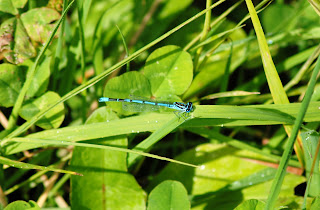This blog may help people explore some of the 'hidden' issues involved in certain media treatments of environmental and scientific issues. Using personal digital images, it's also intended to emphasise seasonal (and other) changes in natural history of the Swansea (South Wales) area. The material should help participants in field-based modules and people generally interested in the natural world. The views are wholly those of the author.
Tuesday, 30 August 2011
French Frolics
Currently camping in the Chartreuse region of SE France. The temperature has ranged from 40 in the day to 4 at night. It is particularly nice to see fields full of Meadow saffron (Colchicum autumnal).
Wednesday, 10 August 2011
Fish Fight Failure?
The Hugh Fearnley-Whittingstall campaign to get the UK public to sample 'fish' outside the 'big five' (Cod, Haddock, prawns, Salmon and Tuna) seems, to a degree, to have some inherent problems (http://www.guardian.co.uk/environment/2011/aug/08/fish-consumption-rises-despite-campaign). People have reportedly been eating more fish but have not generally shown a long-term increase in their uptake of less familiar species (such as Pollack, Megrim and Sardines). It has also been pointed out that, although his campaign to change the law to ban discards by EU fishing fleets (the throwing back of dead or dying fish when they exceed the quota) has received general support, a number of experts believe that the real problem is the need to make the catching of all species sustainable (rather than simply increasing the diversity of what we eat). There is also a particular problem of species being caught to turn into fish meal for agricultural uses (as fertiliser or chicken feed)- apparently including Mackerel.
Tuesday, 9 August 2011
Seeing the Changes 427
Yesterday at the National Botanical Gardens Wales, noted some Waxcap toadstools (possibly Blackening waxcap Hygrocybe conica) in the farmed section. Also saw lots of Great burnet (Sanguisorba officinalis) and Sneezewort (Achilla ptarmica) in bloom in the meadows. In terms of critters, got shots of Common blue damselfly (Enallagma cyathigerum), Caddis flies and a slim hoverfly (Episyrphus balteatus).
Sunday, 7 August 2011
Seeing the Changes 426
In Penclacwydd, White melilot (Melilotus alba) and Common hemp-nettle (Galeolopsis tetrahit) were in flower. Lovage was visited by lots of black, yellow abdomen flies (possibly Sciara hemerobioides).
Polar Perils
Sad news about the boy killed by a Polar bear (with others injured) whilst camping with the British Schools Expedition Service on Spitsbergen in the Svalbard Islands of Norway ( http://www.dailymail.co.uk/news/article-2023325/Norway-polar-bear-attack-Michael-Reid-hero-shot-dead.html?ito=feeds-newsxml). There is a claim that the group were camping in a bear 'hot spot' (http://www.mirror.co.uk/news/top-stories/2011/08/07/polar-bear-camp-was-perilous-place-to-put-up-camp-says-wildlife-film-maker-115875-23325235/). It also seems that the bears are generally spending reduced time on the declining ice floes looking for seals (a common prey) and have been forced to scavenge for alternative food sources on land. I would simply make 2 points. The first is that it is virtually impossible for people to be 100% safe in the vicinity of such animals (one of the very reasons that people go to this location). The second is that the bear didn't perceive itself as doing anything wrong (it's just the way they are). I do hope that the final outcomes don't involve a further removal of bears and/or a reduction in 'adventurous' activities.
Friday, 5 August 2011
Thursday, 4 August 2011
Wednesday, 3 August 2011
Not So Great Expectations
It appears that a virus, Avian pox is decimating many small bird populations, including that of the Great tit (Parus major) in the UK (http://www.guardian.co.uk/environment/2011/aug/03/garden-birds-avian-pox-virus?INTCMP=SRCH ). It is, apparently, difficult to see precise effects of the virus but it impairs both flight and vision. Concentrating the birds at feeding centres could facilitate transmission of the infective agent.
Subscribe to:
Comments (Atom)
-
I n the UK and US, a pparently popular and successful vegan/vegetarian restaurants are reportedly closing or adding meat to their menus ( ...
-
Early ripening fruit may seem convenient but some folk think it confirms environmental stress. There's also a possibility th...

















%20mating%20NWCW.jpg)

